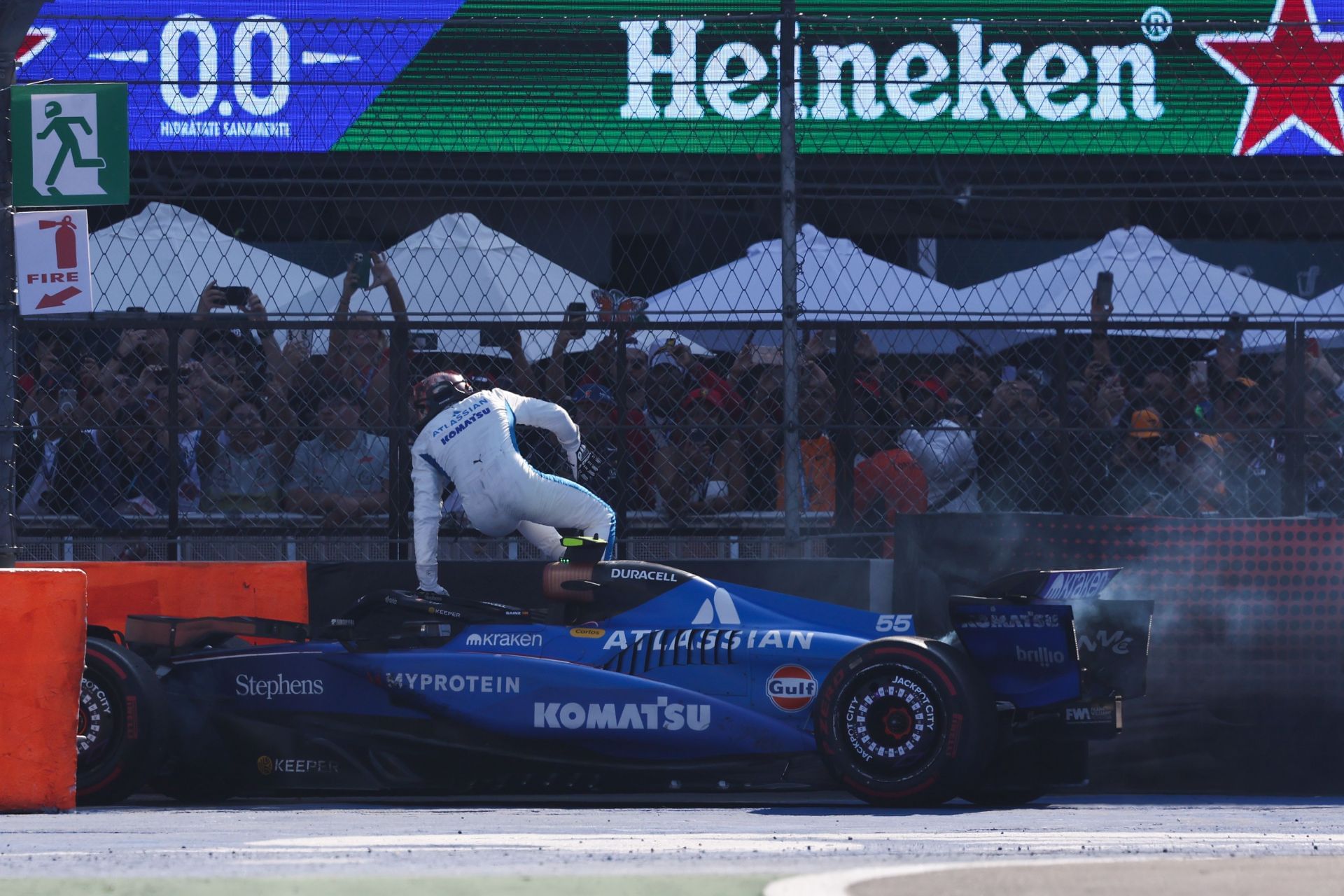Williams driver Carlos Sainz experienced a difficult race at the Mexican Grand Prix, which ultimately ended in retirement due to a mechanical failure. This incident led the race stewards to deploy a Virtual Safety Car (VSC), a decision that generated some confusion among commentators and fans alike. The FIA has since issued an official clarification regarding the reason for the VSC deployment.
—
### Late-Race Drama at Autódromo Hermanos Rodríguez
In the closing stages of the race, with just five laps remaining, both Max Verstappen and Oscar Piastri were steadily closing in on the drivers ahead. Verstappen, running on fresher soft tires, was pursuing Charles Leclerc, while Piastri chased Oliver Bearman of Haas. Both drivers had managed to get within DRS range of their targets, setting the stage for an exciting finish.
However, the situation changed abruptly when Carlos Sainz’s Williams car was brought to a stop near the barrier in the stadium section of the circuit. Initially, only a yellow flag was displayed, but the situation quickly escalated, prompting officials to deploy the Virtual Safety Car. This neutralized the race and prevented Verstappen and Piastri from attempting any overtakes on Leclerc and Bearman during the final laps.
—
### Controversy Over VSC Deployment
The broadcast angle did not show Sainz’s stationary car clearly, leading to speculation among fans and commentators about the necessity of the VSC. Many questioned whether it was warranted, especially since it halted what could have been an intense last-lap battle for position.
To address these concerns, the FIA released an official statement explaining the circumstances that led to the virtual safety car:
> “Later in the race on lap 70, Sainz spun and stopped in the runoff area on the outside of Turn 14. His car came to a halt in an exposed position. The car subsequently began smoking and race control received notifications of fire, making it clear that marshal intervention would be required for recovery.
>
> As is standard procedure when marshals are deployed to recover a car, the race is neutralized, in this case, a Virtual Safety Car (VSC) was triggered until the car was moved to a safe location behind the barriers. The VSC ended as soon as the car was in a protected position, and the race concluded under green-flag conditions.”
—
### Verstappen’s Take on the VSC
Max Verstappen, who was chasing Leclerc closely at the time, was unbothered by the late-race VSC that interrupted his charge. After his only pit stop, Verstappen had emerged more than 10 seconds behind Leclerc but was lapping 5 to 7 tenths faster on the softer tires. Just as he got into DRS range, Sainz’s spin and subsequent smoking car brought out the VSC, ending the potential battle for second place.
Charles Leclerc, reflecting on the incident post-race, admitted that his tires were effectively worn out and expressed relief at the safety car intervention. When asked about the VSC, Verstappen maintained a neutral viewpoint, noting that such interventions can sometimes be advantageous or detrimental depending on the circumstances.
—
The clarification from the FIA helps shed light on what many viewers were unable to see during the race, confirming that driver safety and marshal intervention protocols remain a priority at all times—even if they affect the race’s climax.
https://www.sportskeeda.com/f1/news-fia-issues-clarification-late-race-virtual-safety-car-carlos-sainz-s-retirement
